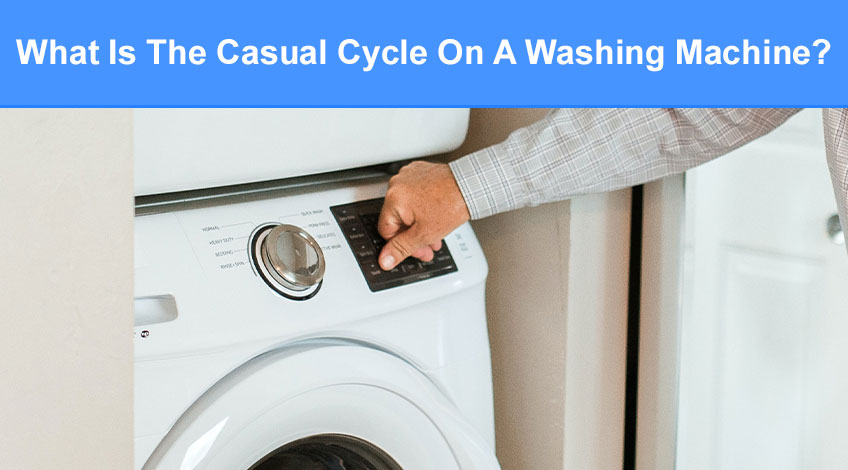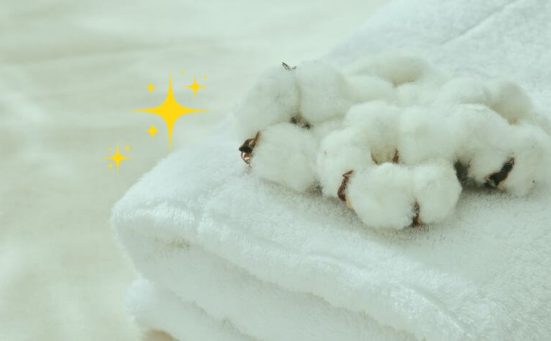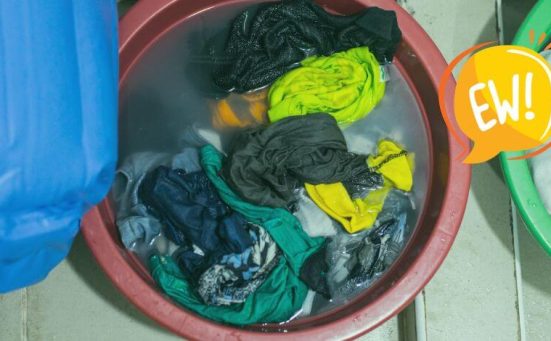
What Is The Casual Cycle On A Washing Machine? (everything you need to know)
There are lots of cycles, settings and programmes on modern washing machines but most of us only use one or maybe two of these cycles. If your washing machine has a casual cycle and you’re not using it, you could be missing out.
Keep reading to find out exactly what the casual cycle is, what it’s used for and much more.
What Is The Casual Cycle On A Washing Machine?
Back in the early days of domestic washing machines there were clothes that were called permanent press. These were chemically treated to not crease or wrinkle so much and washing machine manufacturers added a programme specifically for permanent press clothes.
Jump forward to now and many machines have replaced the permanent press cycle for the casual or wrinkle control cycle. It’s all basically the same cycle just under a different name.
What Is The Casual Cycle Used For?

The casual cycle is used to wash clothes that crease or wrinkle and is mainly used for man made synthetic fabrics. If you want to prevent your synthetic fabrics from stretching, shrinking or fading the casual cycle is your best choice.
It can also be used for regular clothes as well to prevent the need for extra ironing.
How Does The Casual Cycle Work?
During the casual cycle, the clothes are washed using warm, not hot water, and rinsed using cold water.
It is a short cycle that uses a slow spin speed (typically 800 RPM or less) which helps reduce the amount of creases or wrinkles that form on the fabric.
What Are The Benefits Of The Casual Wash Cycle?
The benefits of the casual cycle include;
- It’s Fast
The casual cycle lasts for no more than around 30 minutes from start to finish. This makes it ideal for washing clothes in a hurry. - It Uses Less Water
The casual cycle uses far less water than a regular wash cycle. - It Uses Less Electricity
As the water used doesn’t need to be hot, the casual cycle uses far less electricity than a regular cycle. - It Saves You Money
Less electricity and less water usage all add up to a saving on utility bills. - It’s Gentle
Clothes are less likely to become damaged using a casual cycle because of its low spin speed and reduced agitation. - It Reduces Wrinkles & Creases
The casual cycle cuts down on the number of creases and wrinkles in the clothes which means less ironing.
When Should You Use The Casual Cycle?
Given all of the benefits of using the casual cycle on your washing machine, we recommend using it often. However, there are times when you shouldn’t use the casual cycle which include;
- On Large Loads
The casual cycle isn’t really suitable for large wash loads as the reduced water content would mean much of the load wouldn’t get cleaned properly. - On Heavily Soiled Clothes
Clothes that are too stained or have a high ratio of ingrained dirt wouldn’t get cleaned sufficiently using a casual cycle. - Clothes From Ill People
If you have clothes from any one who has been particularly unwell or clothes with vomit or other bodily fluids on them, they will not get sanitised sufficiently using the casual cycle.
What Clothes Should Be Washed Using The Casual Cycle?

The casual cycle can be used for ;
- Casual Wear
- Knitwear
- Synthetics
- Polyester
- Nylon
- Rayon
- Spandex
- Acrylic
- Acetate
- Lycra
- Elastane
- Office Wear
- School Uniforms
It should also be used for small loads and not full wash loads.
What Are The Stages Of The Casual Wash Cycle?
Even though the casual cycle is one of the fastest cycles on a washing machine, it still runs using a traditional 4 stage routine. These stages are operated at a faster speed than many other cycles but are still present.
They run as follows;
1. The Pre-Wash Phase
As the casual cycle uses a reduced water content, it goes through this stage pretty quickly. Once the water reaches a set level in the drum, the washer speeds through the pre-wash and heads straight into the main wash phase.
2. The Wash Phase
The wash phase is also pretty fast and takes an average of 5 to 7 minutes. The water used is either cold or warm depending on the make and model of machine you own.
The drum is agitated far less than during a regular wash cycle. In fact the clothes hardly get any rough treatment at all. It works in a similar way to the delicate cycle.
3. The Rinse Phase
The rinse is done using cold water and takes an average of twice as long as the wash phase. The drum agitation is kept to a minimum to prevent damage to the clothes and this phase uses a low spin speed.
4. The Spin Phase
The spin phase is typically the longest phase of the casual wash cycle. It spins at around 600 to 800 RPM with long slow intervals separating each burst.
During the slower intervals the drum temperature is cooled to help protect the clothes and also to help prevent creases. The whole spin phase can take upwards of 15 minutes which gives a total cycle time of around 30 minutes.
SEE ALSO: Permanent Press Vs Delicate Cycle – What’s The Difference?
Frequently Asked Questions
The differences between a normal and a casual wash are; the normal wash cycle has a faster spin speed and a higher wash temperature than a casual wash cycle which is designed to prevent wrinkling and creasing.
On washing machines and some tumble dryers, casual, permanent press and wrinkle control are all the same cycles.
The casual cycle is a quick wash. Typically lasting no longer than 30 minutes in total, the casual wash is one of the quickest cycles on a washing machine.
Also, follow us on Pinterest ...



